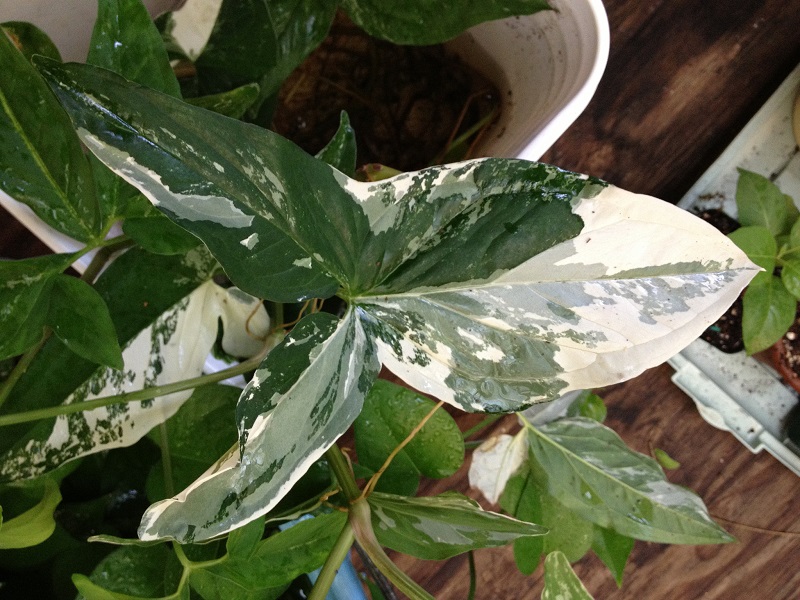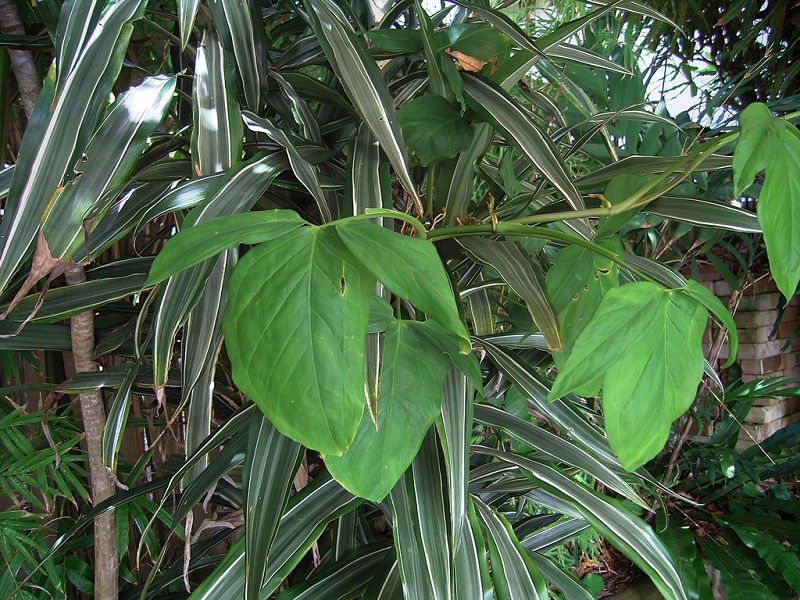There are many varieties of the Syngonium plant and its most common form, syngonium podophyllum. Researching color, size and growing habits is worthwhile.
Growing as epiphytes in the tropical rainforests of Central and South America, as a houseplant syngoniums are tolerant of low light. Whilst they should be kept out of direct sunlight, the attractively-variegated foliage of some varieties of syngonium is best maintained in low to medium light. There are some interesting houseplant options available.
Syngonium Podophyllum
Syngonium podophyllum is the most common form of syngonium, found throughout Mexico, Panama and Costa Rica. Its common names include goosefoot or arrowhead vine, both being references to the leaf shapes of some of the popular varieties in their juvenile form. It used to be known as nephthytis triphylla and is sometimes termed nephthytis podophyllum.
There are substantial differences in leaf shape and color between varieties so it is advisable for prospective purchasers to research their preferred variety. Varieties include:
- Syngonium podophyllum “Imperial White” is a pretty variegated cultivar with white or pale green widespread variegation on the leaf centers and veins.
- Syngonium podophyllum “Pixie” is green with white veins and centers to its leaves. This is a popular variety because it is more compact than other types and does not climb or trail, though it does start to climb when it becomes a mature plant.
- Syngonium podophyllum “White Butterfly” has near-white leaves, sometimes a very light green or pale yellow.
- Syngonium podophyllum “Emerald Gem” has relatively large leaves with short leaf stalks and white or light green leaf veins. It also has better-defined arrowhead-shaped leaves as a young plant than some other varieties.
- Syngonium podophyllum “Variegatum” exhibits cream splashes on its medium green leaves, often appearing as irregular patches.
- Syngonium podophyllum “Emerald Green” has completely green leaves and more closely resembles the natural form in this respect.
- Syngonium podophyllum “Albovirens” has cream or silver parts to the leaf veins. Some leaves can be cream or white with a green margin.
- Syngonium podophyllum “Trileaf Wonder” has green leaves with silver-grey veins.
- Syngonium podophyllum “Atrovirens” has darker green leaves with silver veins.
- Syngonium podophyllum “Green Gold” has attractive foliage, the leaves being generally yellow with dark green edges. It displays well as a trailing plant, but does have a reputation in some quarters for being a little more delicate as a houseplant than other varieties.
Other Syngonium Varieties
There are several varieties of Syngonium other than Syngonium podophyllum, with different rates of growth, likely size, and variegation. They are all fairly easy to care for if humidity is maintained. Syngonium auritum is commonly found in Jamaica and Mexico but also appears in other countries. A slow-growing vine with three, or more usually five, rich green segments to its leaves, the leaf size usually ranges from 6×3 inches in the young plant up to 15×12 inches in the mature plant.
- Syngonium auritum is known as “five fingers” because of the single long narrow central segment which grows to around eight inches in length, with two medium segments at right angles to it and two small ones at the base of the leaf stem. Syngonium auritum “Fantasy” has variegated cream or white leaves.
- Syngonium arrow is a fairly typical Syngonium houseplant variety with arrowhead-shaped leaves, green in color with cream-colored veins. Like Syngonium podophyllum “Pixie”, it is compact and bushy but develops climbing stems as it matures. It tends to have slightly less variegation than “Pixie”. Syngonium erythrophyllum is another typically slow-growing evergreen syngonium with arrowhead-shaped leaves. It also has slim stems in its juvenile stage which thicken as the plant ages.
- Syngonium vellozianum naturally occurs in Brazil. It is similar to Syngonium podophyllum at the juvenile stage, but when mature it is more slender than the common form. Syngonium angustatum “Albolineatum” has triple-lobed leaves of around 3×2 inches when young which grow to around 9×9 inches when mature, these leaves were green with white down the middle of each segment in a healthy specimen. Syngonium wendlandii from Costa Rica has green main leaves but the other leaves have white veins. These colorations are clearer in the juvenile plant.
- Syngonium hoffmannii is an evergreen originating from Costa Rica that can be vigorous. Stem lengths on mature houseplants of this species regularly exceed six feet, even growing to ten feet long if allowed. Its arrowhead-shaped green leaves are tinged grey, and the veins are silver or white. The center of the leaf can sometimes match the vein colorations. Syngoniums generally require high humidity levels.







